With its tantalizing maze of small streets, quirky museums, and unique neighborhoods, seeking out all of the incredible secret spots in Lisbon is a delight!
While a couple of decades ago you could easily argue that the city of Lisbon itself–not to mention Portugal as a whole–was a hidden gem, today, travelers need to work (slightly) harder to get off the beaten path in Lisbon.
Luckily, it’s still not too difficult: while highlights like the Jerónimos Monastery and Miradouro das Portas do Sol are constantly filled with visitors (though significantly less so if you visit Lisbon in winter), there is still a treasure trove of fantastic and uncrowded places to visit in Lisbon.
We were lucky enough to spend over a year calling Lisbon home and found countless offbeat and unusual things to do in Lisbon along the way.
We’ve curated this guide to hidden gems in Lisbon to cover some of the absolute best, along with our personal favorites, ranging from world-class museums to quirky points of interest.
If you’re heading to Portugal soon and are hoping to experience Lisbon off the beaten path, here are the (semi) secret Lisbon spots you need to know about!
Table of Contents
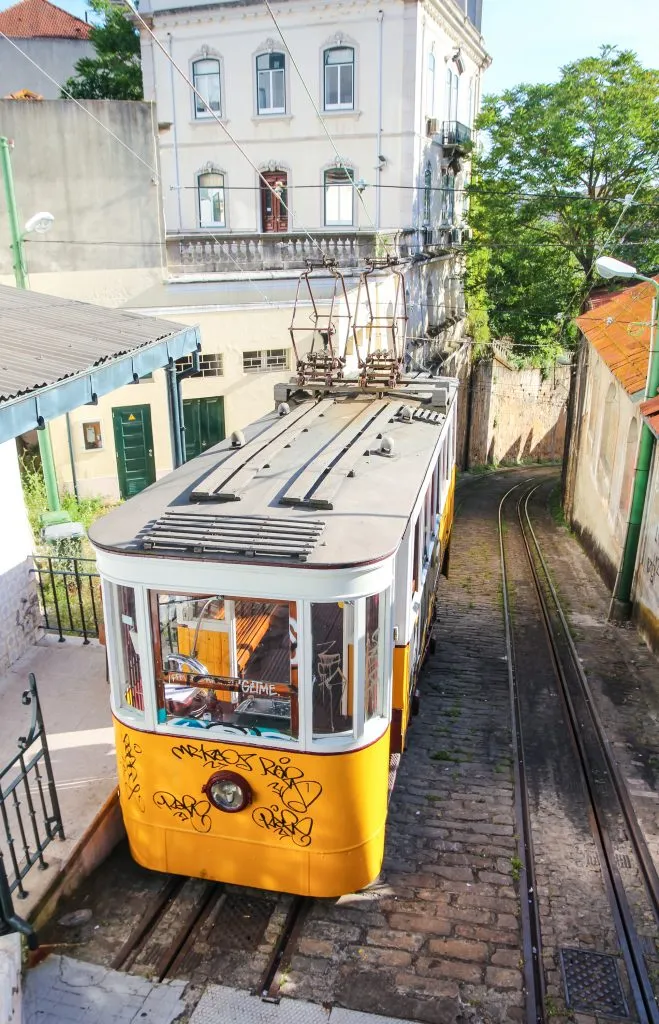
A Note on Using the Lisbon Card to Access Hidden Gems
If you’re hoping to enjoy several of Lisbon’s top hidden gems during your trip, be sure to price out the Lisbon Card!
As of 2023, the Lisbon Card isn’t necessarily the best option for travelers planning to spend a typical few days in Lisbon hitting up the city’s highlights–but when it comes to offbeat museums and less-visited viewpoints, it can be a great deal.
All of the entrance fees included with the Lisbon Card are listed with the pass details, and it includes entrance to many off the beaten path Lisbon attractions covered in this guide, including the National Carriage Museum, National Tile Museum, Arco da Rua Augusta, and more.
Public transportation within Lisbon and the nearby area is also included in the pass.
The Lisbon Card may not be right for every traveler, but for visitors hoping to get off the beaten path, it can be a bargain!

Secret Spots in Lisbon Off the Beaten Path
Monastery of São Vicente de Fora
If you’re hoping to enjoy the beauty of a Portuguese monastery without either leaving the city or fighting the inevitable crowds at the Jerónimos Monastery, head right to the Monastery of São Vicente de Fora!
Dating to the 17th century, this beautiful monastery has everything a visitor could hope for: gorgeous azulejos, very few crowds, and even stunning views from the rooftop.
The architecture is a mish-mash of styles that have melded together over the centuries, but could primarily be described as Mannerism, with most of the current architecture dating to the 18th century.
This is one of our personal favorite hidden gems in Lisbon, and, thanks to its location near Graça, it’s an easy addition to most Lisbon itineraries, too.
Don’t miss the monastery’s church, either!
Unlike the monastery itself, the church is free to visit.
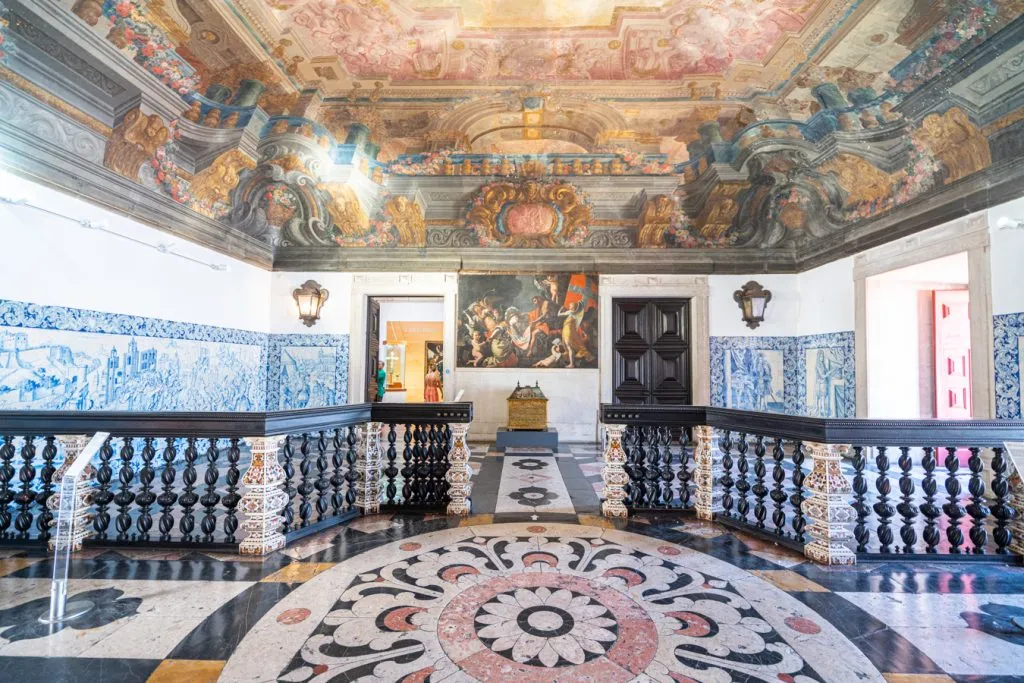
Jardim da Estrela
I am quite biased, as we lived a 5-minute walk from this beautiful park for a year, but the Jardim da Estrela is easily one of the most delightful hidden gems in Lisbon.
Dating to the 19th century, this carefully laid out and maintained park feels like a mash-up of an English garden and a Portuguese park, complete with a wrought iron bandstand, two different kiosks selling coffee and snacks, duck ponds, statues, and exotic trees and plants.
The whole beautiful package is overlooked by the Basilica da Estrela, and it is a wonderful place to grab a coffee, settle into a table in the shade, and relax.
Despite the fact that the Jardim da Estrela is located right along the Tram 28 line, it’s not overwhelmed with tourists (schoolchildren are a different story, but they add to the ambiance).
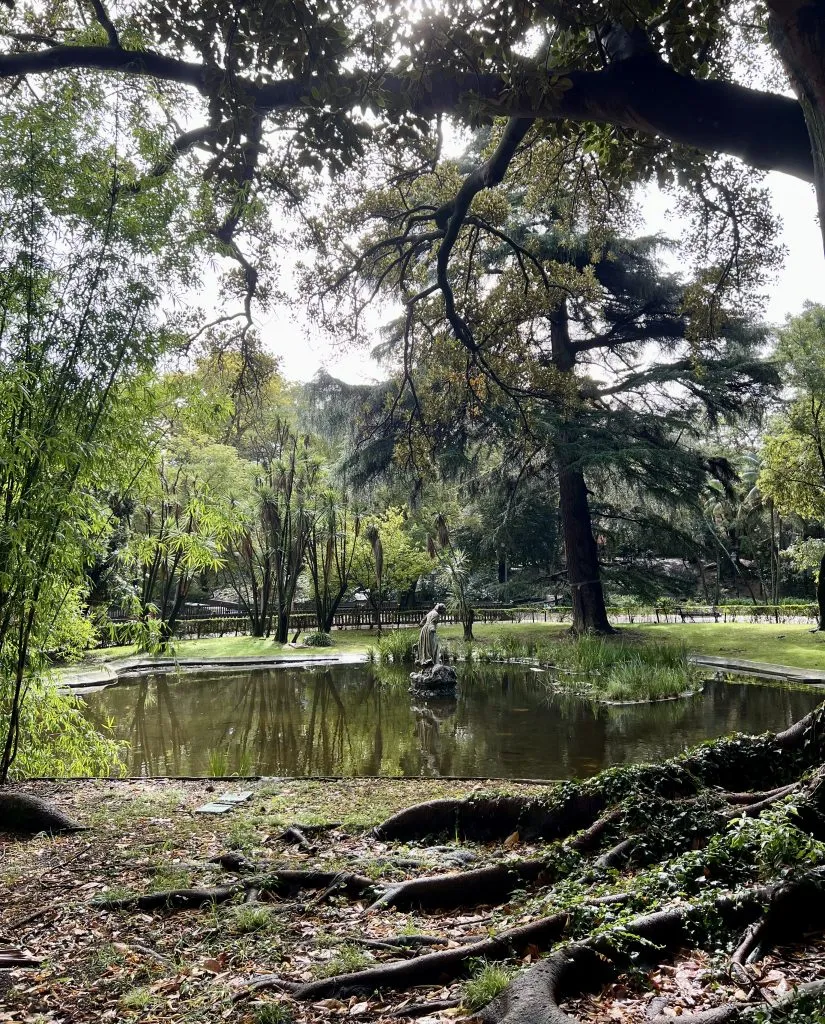
The Crypt of Saint Anthony
Just a handful of steps down the hill from the Lisbon Cathedral, you’ll find the beautiful and free-to-visit Igreja Santo Antonio, built in honor of the patron saint of Lisbon.
While the interior of the church itself is lovely, the true secret spot in Lisbon that you can access here is the crypt.
Said to be the place where Saint Anthony was born in the 12th century, this small crypt is an interesting (and quite hidden) corner of the city.
To access it, make a hard left as soon as you enter the church.
Head down the tiled hallway, well past the toilets and the collection of relics, until you reach a dead end.
There, turn right, proceed down the staircase, and you’ll find yourself in Saint Anthony’s crypt!
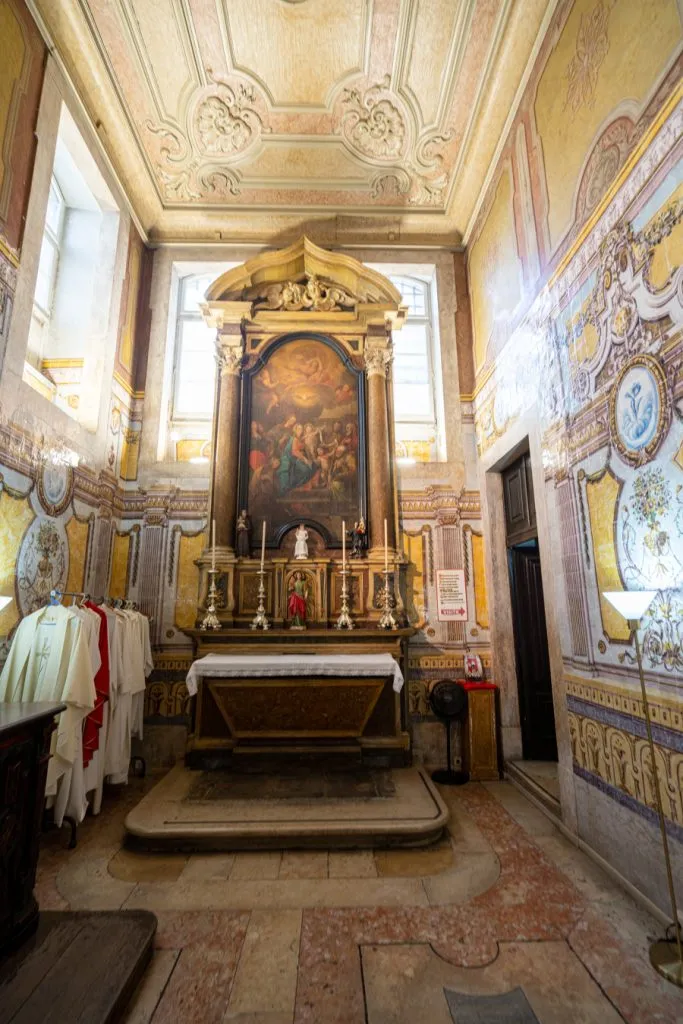
Igreja de São Domingos
Tucked away behind an unassuming white facade, just steps away from Rossio Square, lies the memorable Church of São Domingos.
It’s one of the most unique churches in Lisbon, and one of my personal favorites!
Originally dedicated in the 13th century, the Church of São Domingos was severely damaged by an earthquake in 1531… and then again in the infamous earthquake of 1755.
Fast forward a couple of hundred years, and a 1959 fire caused even more damage.
The church has been restored, but in such a way that its scars are clearly and obviously preserved.
The effect is one of the most striking church interiors in Lisbon and one that’s definitely worth ducking inside to see!
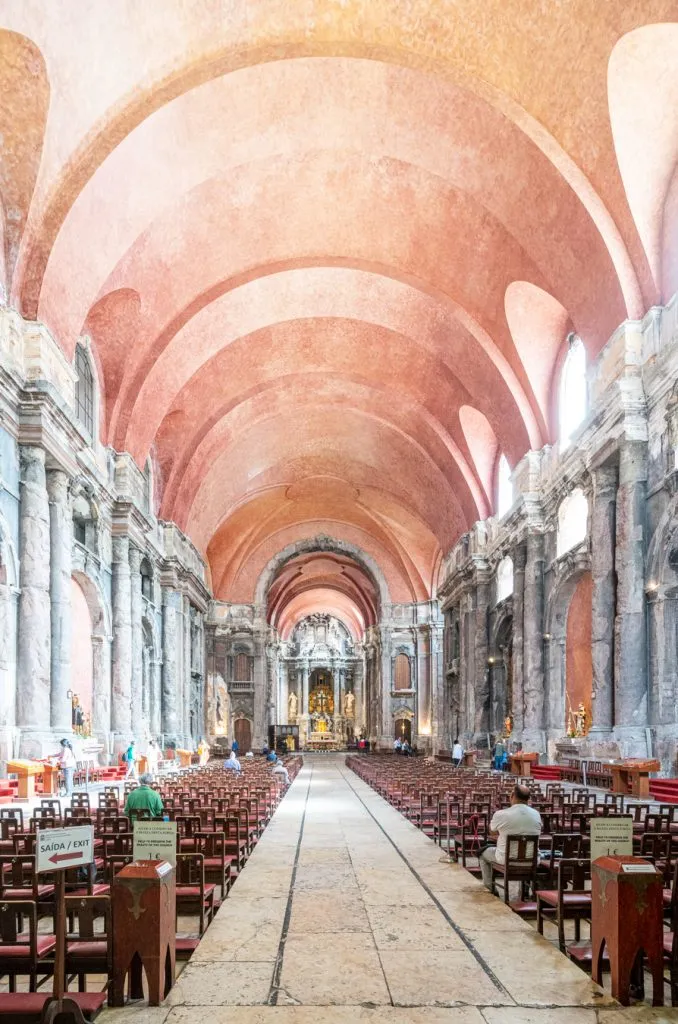
Ajuda Palace
Despite being absolutely beautiful and the one-time home of the Portuguese royal family, the lovely Ajuda Palace is still a somewhat secret Lisbon attraction.
Originally commissioned in the wake of the earthquake of 1755, the palace took centuries to complete due to various political and economic upheavals.
Standing tall on a hill overlooking Belém, the Ajuda Palace was the final official residence of the Portuguese royal family before the revolution in 1910.
Today, though, it is a gorgeous, furnished palace, and an interesting and beautiful alternative to the crowded palaces of Sintra.
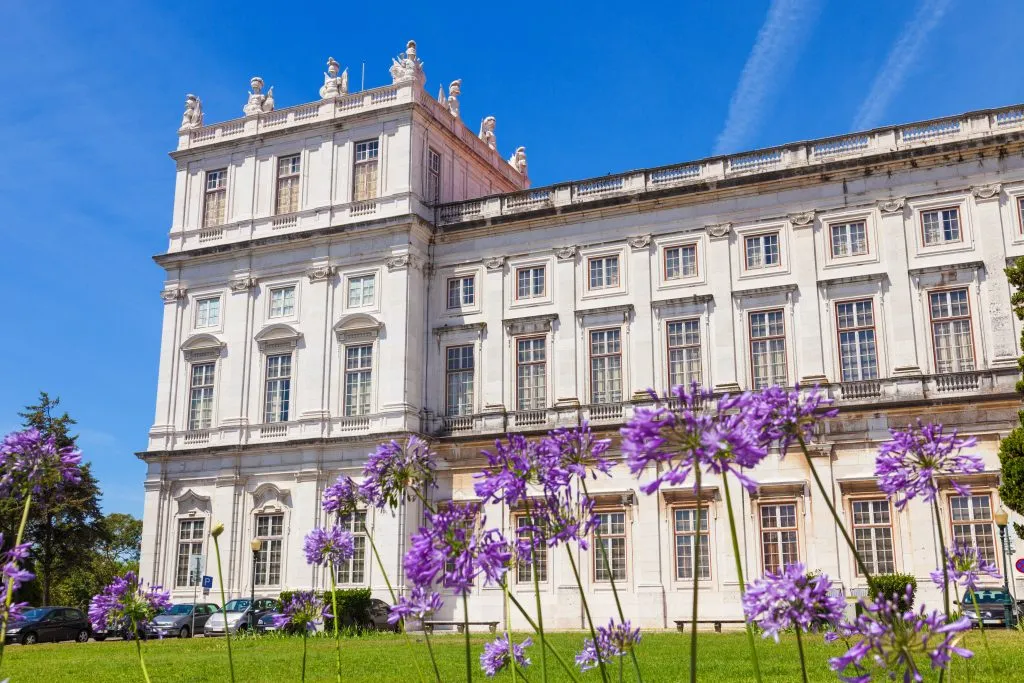
Arco da Rua Augusto
Just about everyone who visits Lisbon will marvel at (and probably photograph) the beautiful Arco da Rua Augusta that stands proudly at the edge of the Praça do Comércio–but only a very small handful will admire the view from the top!
This intricate triumphal arch, built to honor the city’s rebirth after the devastating earthquake of 1755, boasts a fantastic view of the Praça do Comércio.
Heading to the top, which is accomplished by a combination of an elevator ride and a quick climb, is quick and simple.
Despite walking by the arch more times than I can count, I’ve never seen a line here!
I won’t necessarily say the view is the absolute best in Lisbon–but it is pretty fantastic, and worth the few Euro (visiting is also included with the Lisbon Card) for travelers seeking out the best hidden gems in Lisbon.
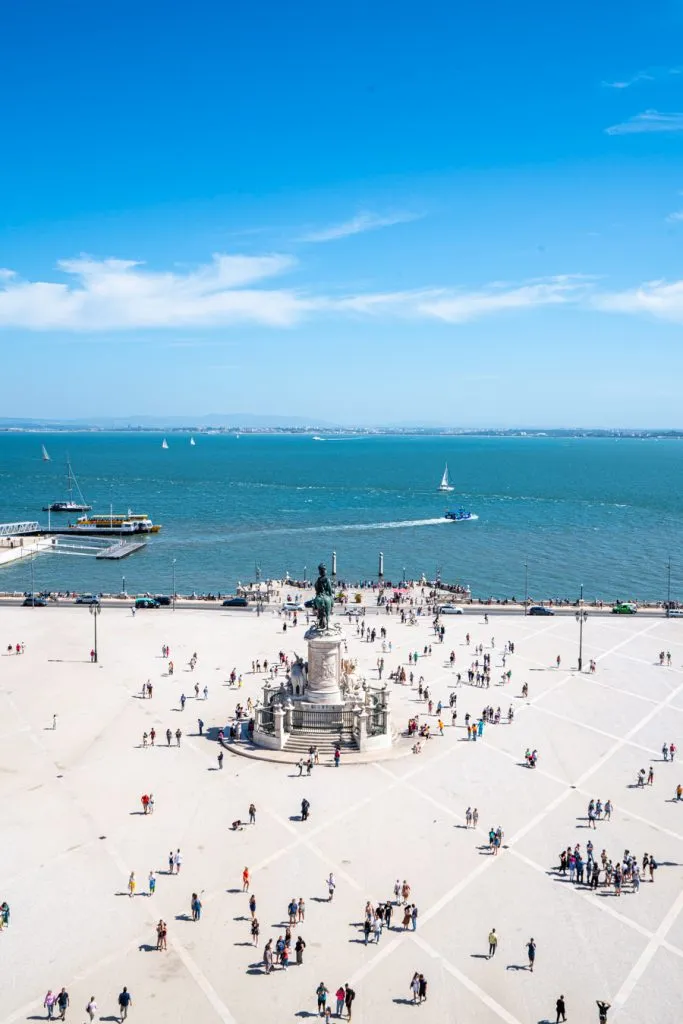
National Museum of the Azulejo (National Tile Museum)
Housed in the Madre de Deus Convent that dates to 1509, the National Museum of the Azulejo is solidly off the beaten path in Lisbon in a very literal sense–most visitors will likely take a cab ride specifically to get here.
It’s absolutely worth going out of the way for though. In fact, this may be my favorite museum in all of Lisbon!
Dedicated solely to Portuguese azulejos, the delightful painted tiles that are near-synonymous with the style of the country, the museum houses an impressive array of azulejos with some dating back as far as the 15th century.
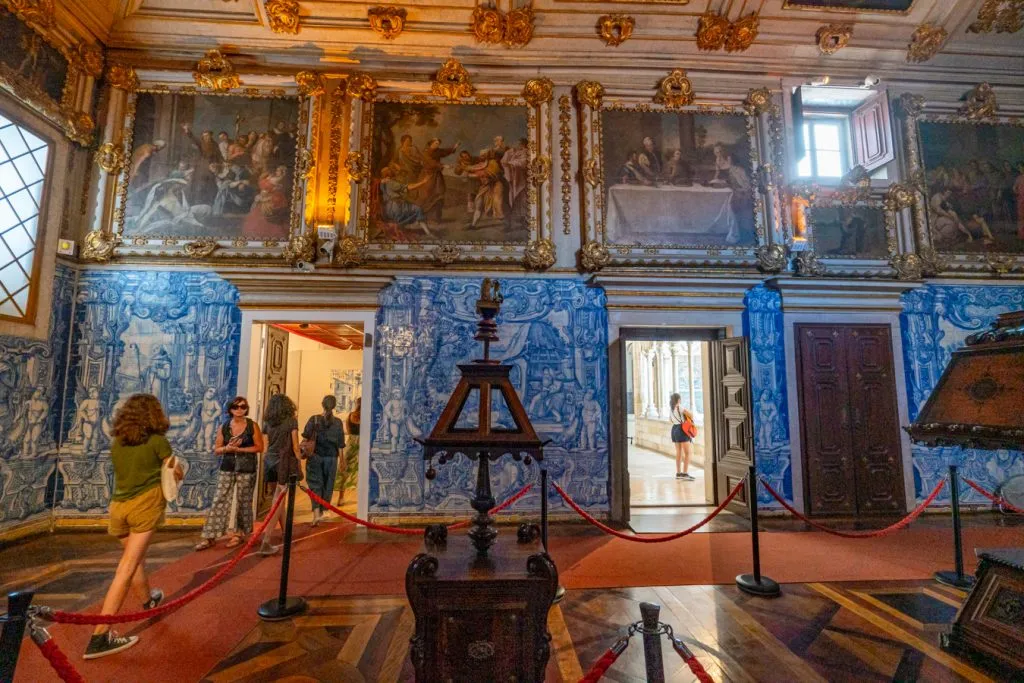
Among the unmissable features of the museum is a 75-foot-long panel of azulejos showing the Lisbon skyline as it was in 1700 (in other words, 55 years before the infamous earthquake of 1755 literally reshaped the city).
The opulent Madre de Deus Convent Church can also be found here, and is a must-see!
Generally speaking, while Lisbon has some beautiful azulejos, the famous tiles aren’t as common in the capital as they are in, say, Porto.
If you are an azulejo fan planning to visit Lisbon, the museum is the perfect place to admire them!
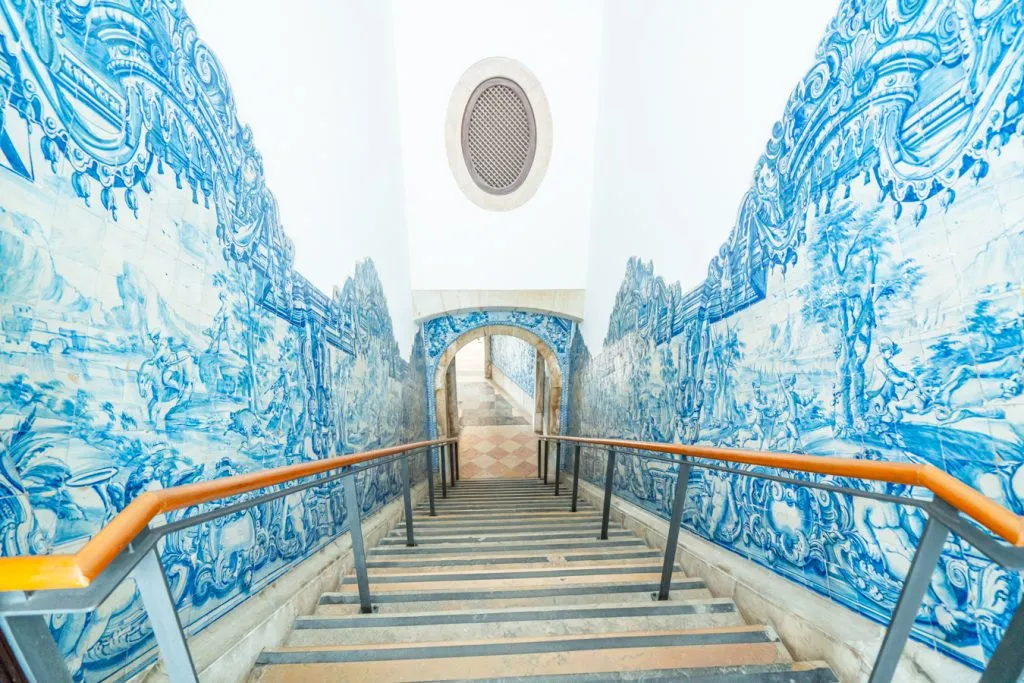
Street Art of Lisbon
Lisbon is packed with beautiful street art, but the names Vhils and Bordalo II both reign large over the city’s art scene.
If you’re looking for hidden gems in Lisbon, going on a self-led scavenger hunt for some of their work is a fantastic way to explore.
Vhils is primarily known for moving portraits done in unique mediums, and Bordalo II for larger-than-life colorful statues, and both artists are incredible.
If you’d rather not explore alone, a Lisbon street art tour is a popular way to discover less-visited street art in the city, and learn the history of the pieces along the way!
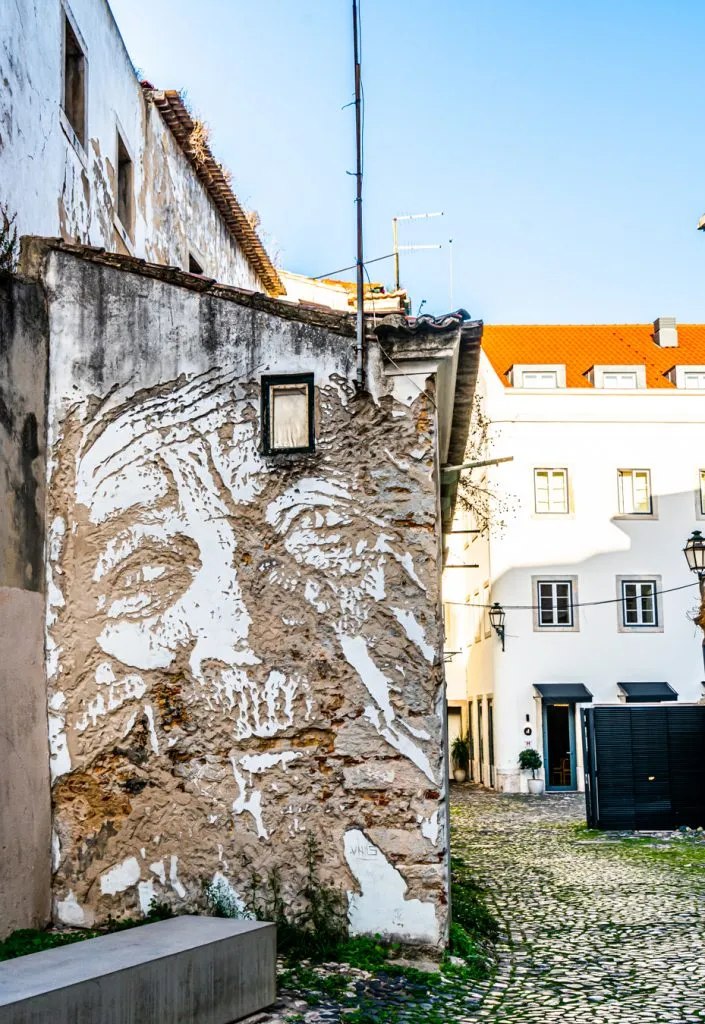
Basilica da Estrela
The Basilica da Estrela holds a special place in my heart among all of these Lisbon hidden gems: for a year, we called the neighborhood home and I admired this building almost daily!
Built in the 18th century by Queen Mary I, the Basilica da Estrela (or Royal Basilica and Convent of the Most Sacred Heart of Jesus) features an intricate dome, a famous nativity scene carved in cork, enormous amounts of marble, and beautiful views from its rooftop.
And, despite being located right in front of one of the stops for Tram 28, it’s typically very uncrowded!
Visiting the interior of the church is free and a must-do when exploring Lisbon off the beaten path, but to experience one of Lisbon’s secret spots, keep an eye out for the climb to the rooftop.
For a nominal fee, you can admire views of Lisbon (not the very best ones, I’ll admit, but still lovely) and, even more importantly, stroll around the interior of the dome near the ceiling.
The view from the edge of the dome offers unparalleled views of the church itself, and is well worth the climb to the top!
I was lucky enough to have this view completely to myself one sunny winter afternoon, and it remains a cherished memory of exploring Lisbon.
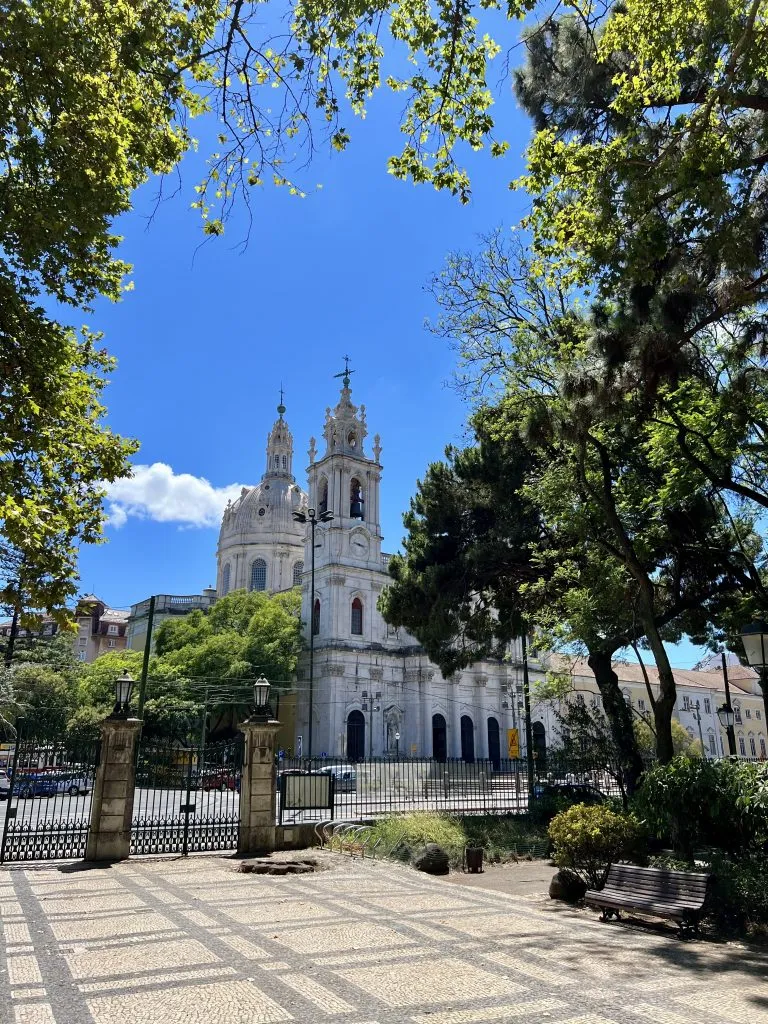
National Pantheon
With an interior heavily inspired by St. Peter’s Basilica in Rome and beautiful views of the Tagus River, the National Pantheon is an excellent stop for travelers looking for unusual things to do in Lisbon.
Impressive to admire and typically uncrowded, the National Pantheon started its life as a 17th-century church before being converted to a National Pantheon in 1916 (the dome was completed 50 years later, in 1966).
Many of Portugal’s most notable figures are interred, literally or figuratively, here.
Personally, we slightly prefer the view from the nearby Monastery of São Vicente de Fora, so if you only visit one, we’d opt for the monastery.
If you have time for both, though, the National Pantheon is definitely worth a visit (and entrance is also included with the Lisbon Card).
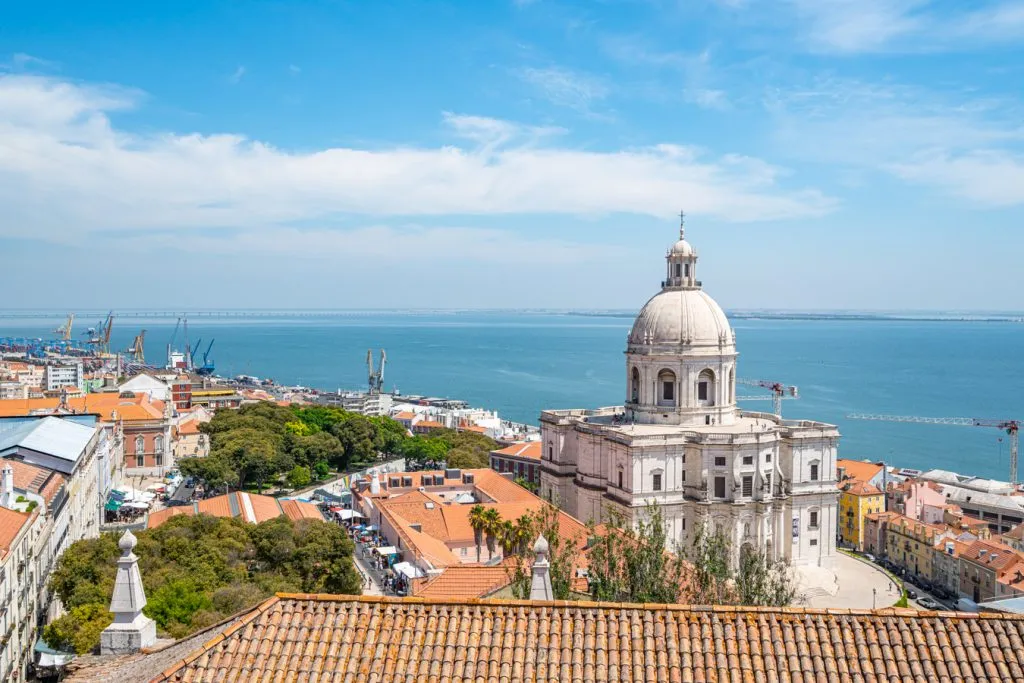
Church of Nossa Senhora da Conceição Velha
Located a very short (and somewhat rarely for Lisbon, flat) walk from Praça do Comércio, the front facade of the Church of Nossa Senhora da Conceição Velha is immediately striking.
Built in the Gothic Manueline style that is so iconic to Lisbon (the same style as the Jerónimos Monastery and Belém Tower), the facade is well worth going out a bit out of your way for.
Hidden in plain sight, this is one of those secret Lisbon attractions that is easy to see if you’re looking for it, but equally easy to miss if you’re not.
The church is very rarely open–really only on Sundays–and while the interior is worth stepping into if it happens to be unlocked, it’s not as much of a must-see as the facade.
The Manueline facade survived the earthquake of 1755, but the rest of the church did not and was rebuilt afterwards.
On a darker but very historically relevant note, I learned in Queen of the Sea: A History of Lisbon that this church is where enslaved people were forcibly baptized upon arrival in Portugal.
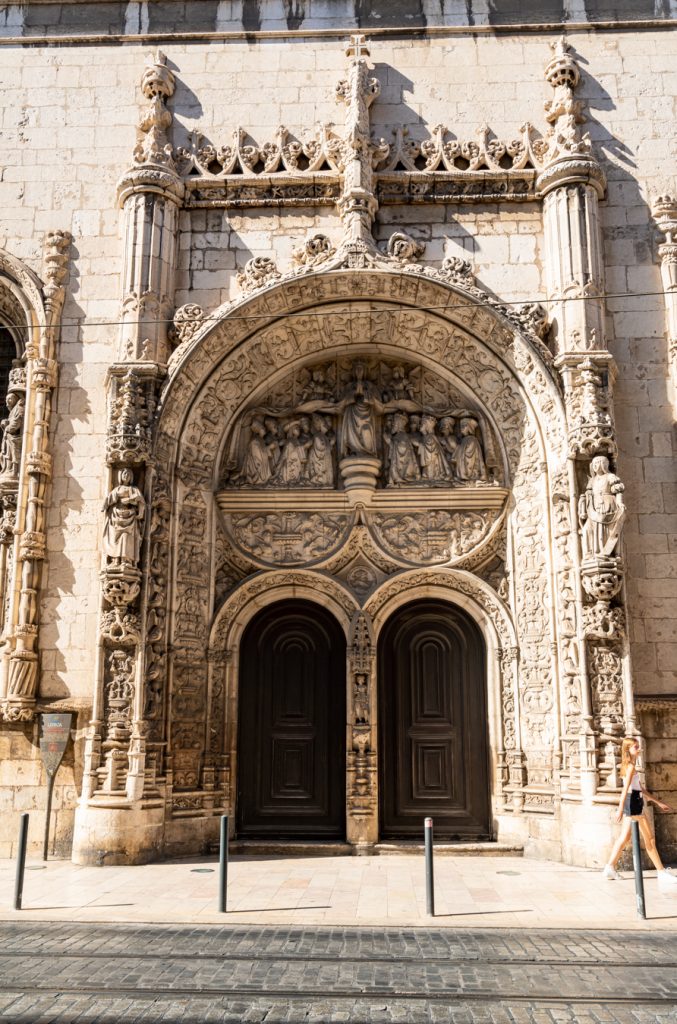
The Calouste Gulbenkian Museum
Comprised of the private collection amassed by Calouste Gulbenkian, this fascinating art and history museum is a beautiful and uncrowded place to visit in Lisbon.
Stretching through 5000 years of history and including everything from Greek statues to Monet paintings, the Calouste Gulbenkian Museum is one of those museums where you find yourself wondering why it isn’t more crowded… while still appreciating the room to stretch out.
If you’re looking for a beautiful museum in Lisbon that is somewhat hidden in plain sight, head to the Gulbenkian for an afternoon.
Be sure to save time to wander through the expansive gardens, too!
And, if you’re ready to add a little variety to your time spent enjoying Portuguese food, we can confirm that Ground Burger, located along the edge of the garden, truly does make one of the best burgers in Lisbon.
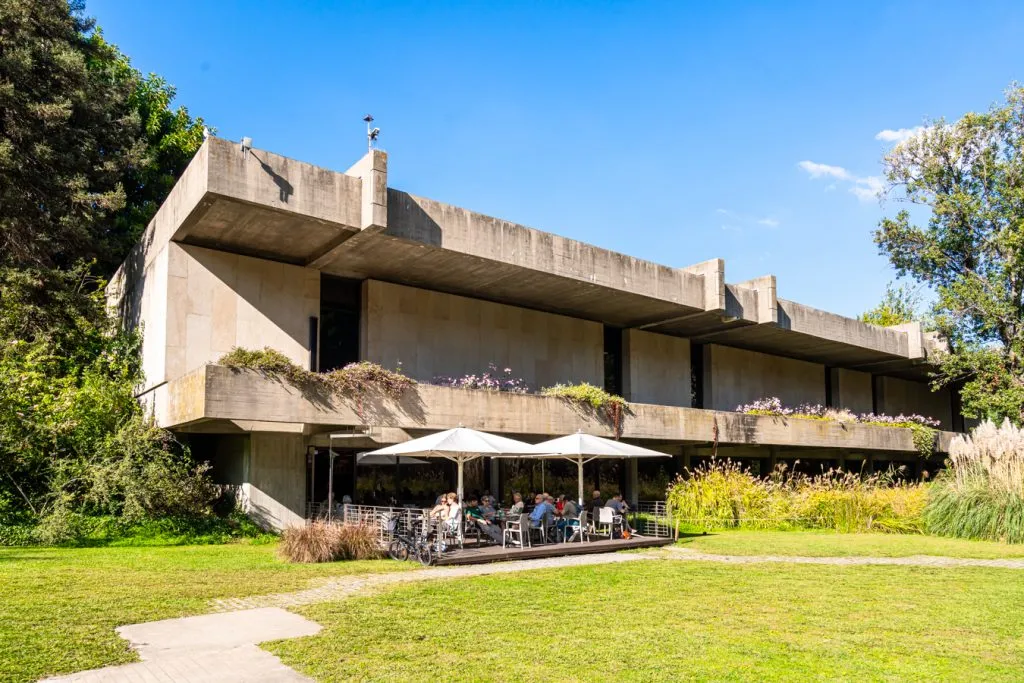
Igreja de Santiago
The small and plain exterior of the Igreja de Santiago is easy to walk by without noticing when exploring Alfama–but this seemingly plain church has a big history!
There has been a church on this spot for almost 1000 years, and today, the current church operates as the starting point for the Portuguese Way of St. James, one of the pilgrimage routes leading to Santiago de Compostela in Spain.
In other words, if you’ve ever dreamed of walking the Camino de Santiago, the Portuguese version (or one of them, anyway) starts right here in Alfama!
The church is typically closed, opening only twice a week for mass, making it more of a quick point of interest than a true hidden gem.
Since the Igreja de Santiago lies more or less across the street from the ever-popular Miradouro de Santa Luzia, though, it’s definitely worth adding to your list of things to see in Lisbon!
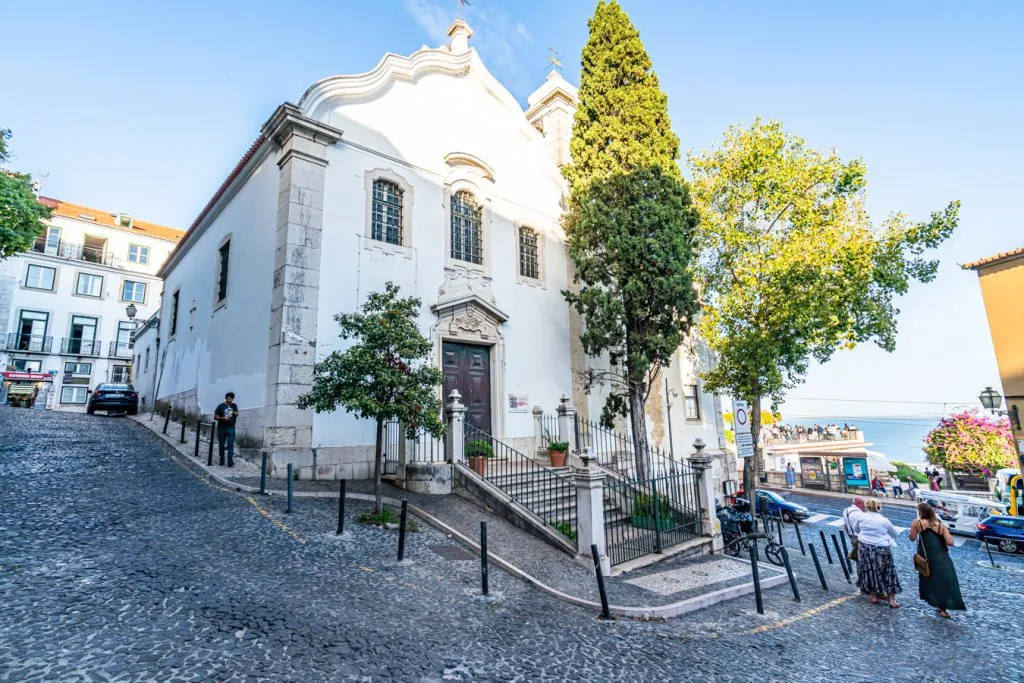
Prazeres Cemetery
Though it is technically situated at one of the endpoints of the famous Tram 28 line, the uncrowded Prazeres Cemetery still qualifies as an off the beaten path destination in Lisbon!
Few tram riders make it all the way to this stop in Campo de Ourique, and still fewer of those make it past the high walls of Prazeres Cemetery to discover how beautiful it is inside.
Exclusively decorated with mausoleums, this 19th-century cemetery is shaded, peaceful, and home to many notable figures in Portuguese history (including some Portuguese presidents).
If you continue all the way to the back of the cemetery, you’ll also be treated to beautiful views of the Tagus River and the famous 25 de Abril Bridge!
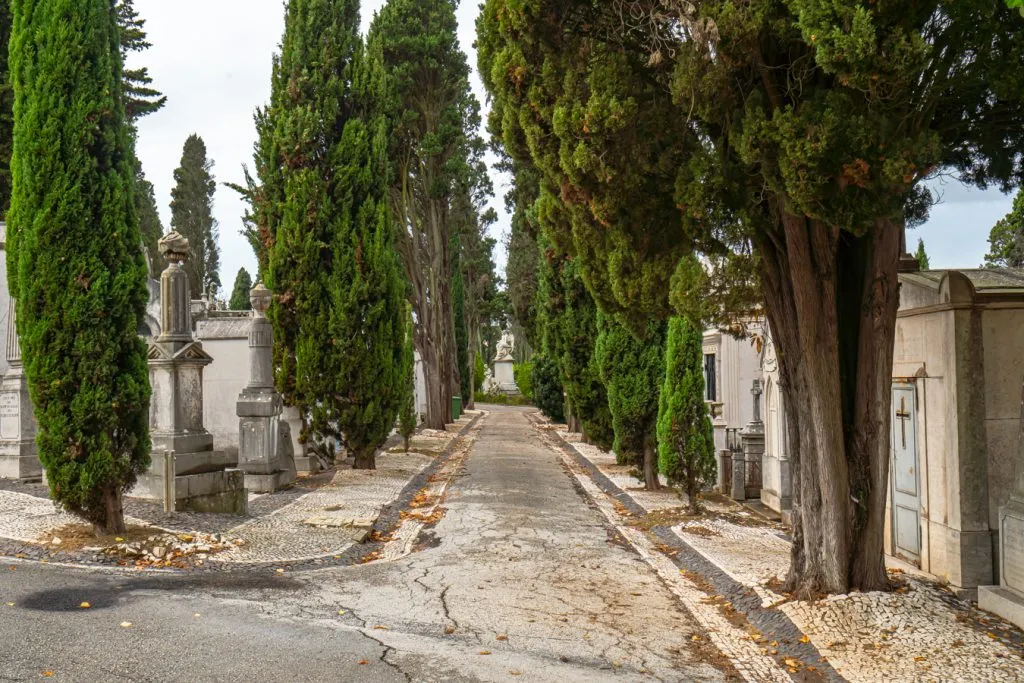
Top of the Monument to the Discoveries
Though the Monument to the Discoveries (or Padrão dos Descobrimentos) is one of the most recognizable landmarks in Belém, the top of this famous monument is one of Lisbon’s secret viewpoints.
Blow past the crowds at the base to head to the top (it’s a short climb, and an elevator gets you most of the way up) of this monument for stunning views of the Belém Tower, 25 de Abril Bridge, Tagus River, Jerónimos Monastery, Cristo Rei statue, and more.
The interior of the monument has a small, somewhat interesting museum about the revitalization of Belém in the 20th century–but the real draw is definitely the view.
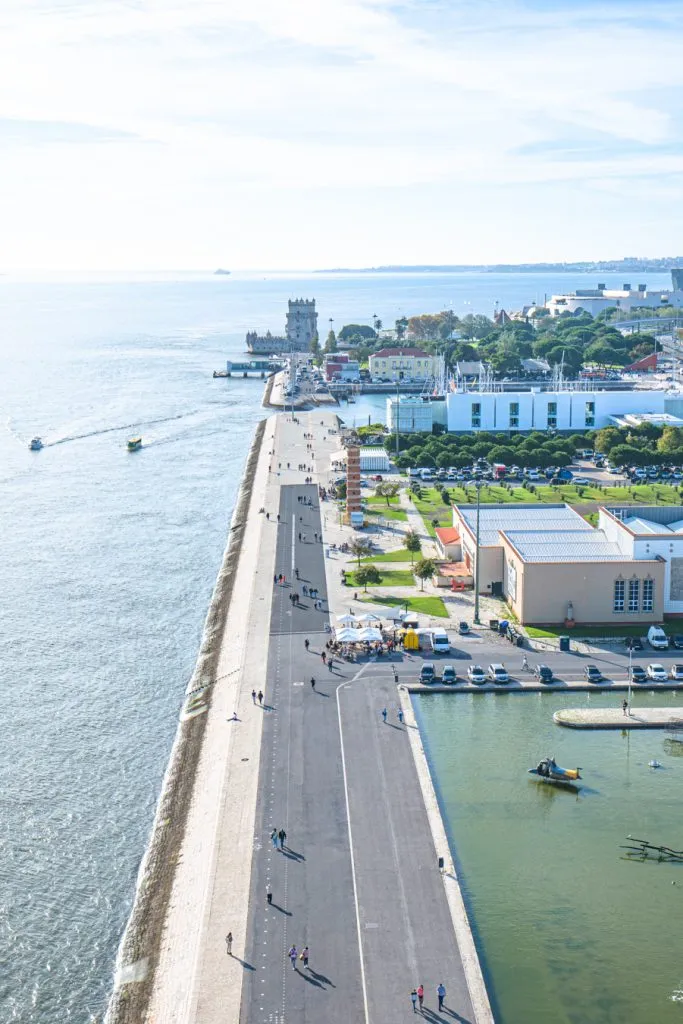
Queluz National Palace
The beautiful Queluz National Palace, with its dazzling Rococo architecture and expansive gardens, is technically one of the official palaces of Sintra… but a much less crowded one than, say, Pena Palace.
Located in Queluz between central Lisbon and Sintra, the Queluz National Palace is an excellent alternative to the more popular palaces of Sintra for those looking to stay closer to the city and/or dodge heavy crowds.
Queluz’s story is as interesting as its opulent rooms are beautiful: one of the final Rococo palaces to be built in Europe, this 18th-century palace served as the retreat of a queen in declining mental health, and was once the official residence of the Portuguese royal family.
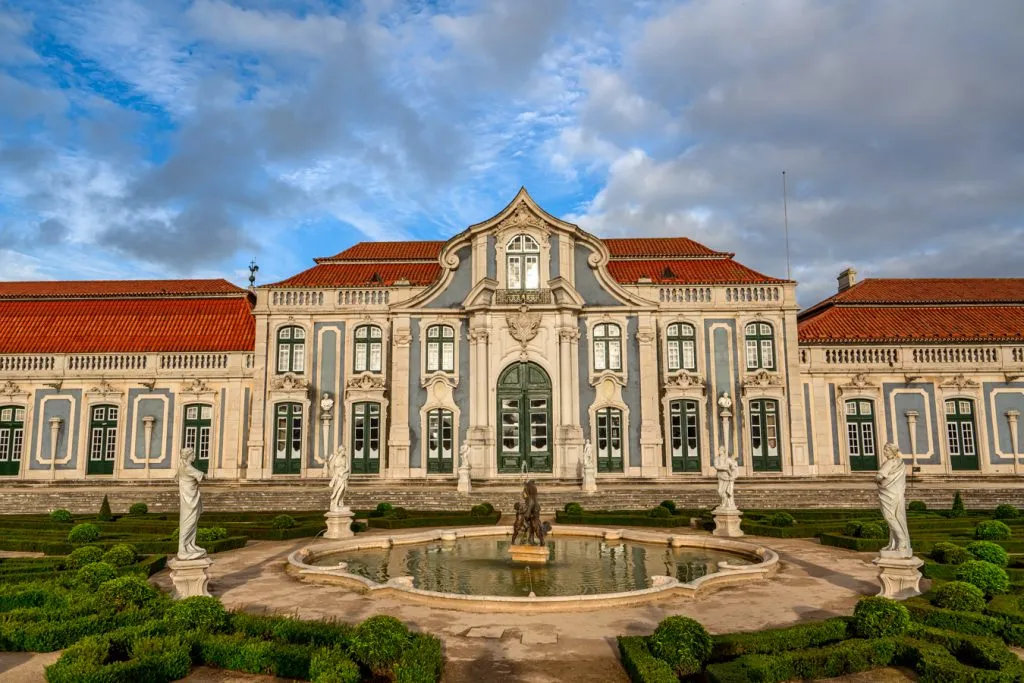
It’s also where the royal family fled from in 1807 when they moved the court to Brazil in order to avoid Napoleon.
Apart from history, though, the palace is gorgeous in its own right.
It doesn’t offer many azulejos, opting instead for the Rococo style that feels somewhat French at times.
Thanks to being one of the more unusual things to do in Lisbon, it’s also marvelously uncrowded: we practically had it to ourselves on the afternoon that we visited!
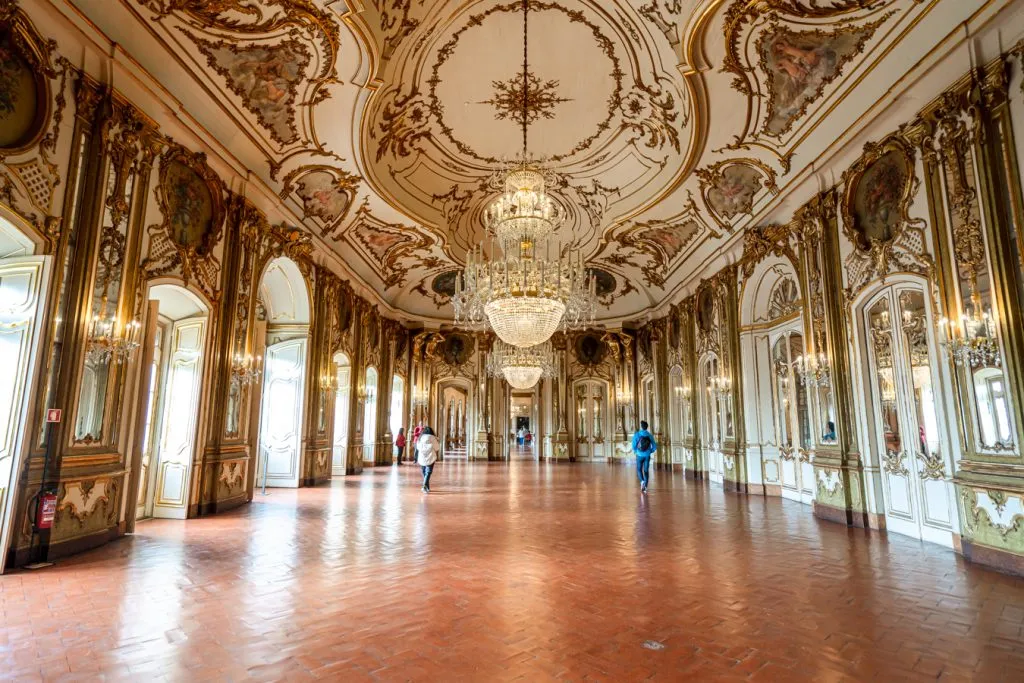
The British Cemetery of Lisbon
Britain and Portugal have a very long history of being allies–so perhaps it shouldn’t be too surprising to find a British cemetery in Lisbon!
As the cemetery is tucked behind a concrete wall in Estrela, though, it’s very easy to miss.
Established in the 18th century to give British Anglicans a place to be buried in Catholic Portugal, the cemetery is peaceful and lovely.
Most famously, it is the final resting place of Henry Fielding.
The cemetery is also home to the beautiful St. George’s Church, whose pink facade is immediately eye-catching!
Overall, the British Cemetery of Lisbon reminds me forcefully of the English Cemetery in Rome, which historically served a similar purpose.
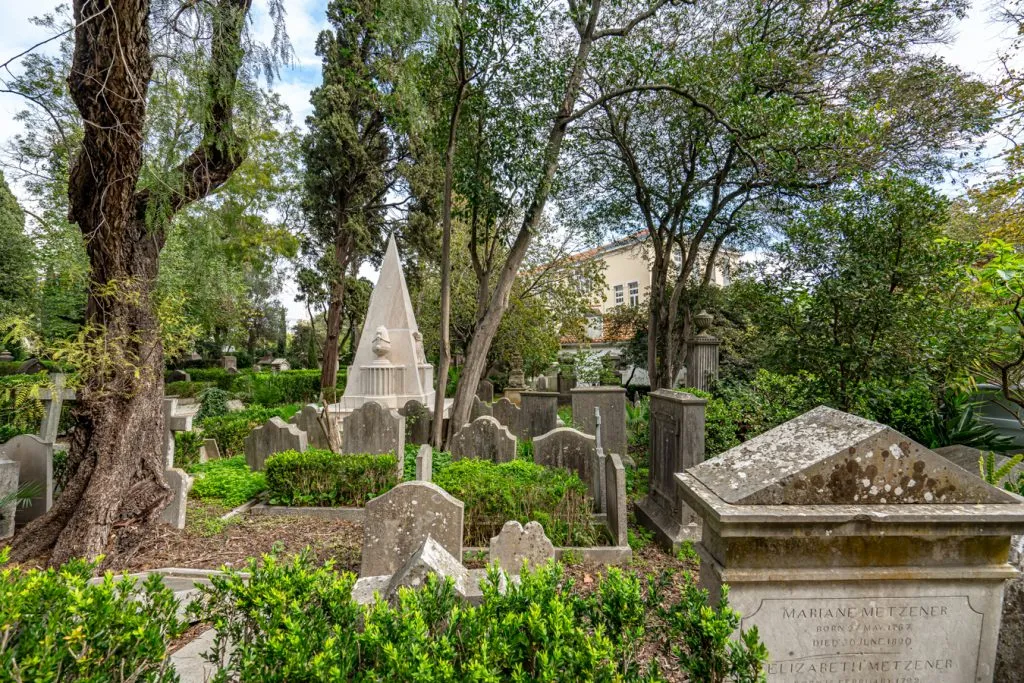
The Roman Theatre of Lisbon
Lisbon’s Roman Theatre is about as far from the Colosseum in Rome as you can imagine.
The theater is still in the process of being excavated, and rather than soaring into the sky, you’ll actually enter a covered building to see it.
If you’re interested in Lisbon’s long history, though, it’s worth a quick stop when in Alfama (the Roman Theatre is barely a stone’s throw from the Lisbon Cathedral, though it’s easy to miss if you’re not looking for it).
Built in the 1st century and abandoned in the 4th, the theatre was rediscovered twice, first in the 18th century and then again in the 19th century, when the discovery stuck.
Notably, it was the discovery of the Roman Theatre that told researchers that Lisbon (or Olisipo, in Roman times) was a more important city to the Roman Empire than it was once thought to be.
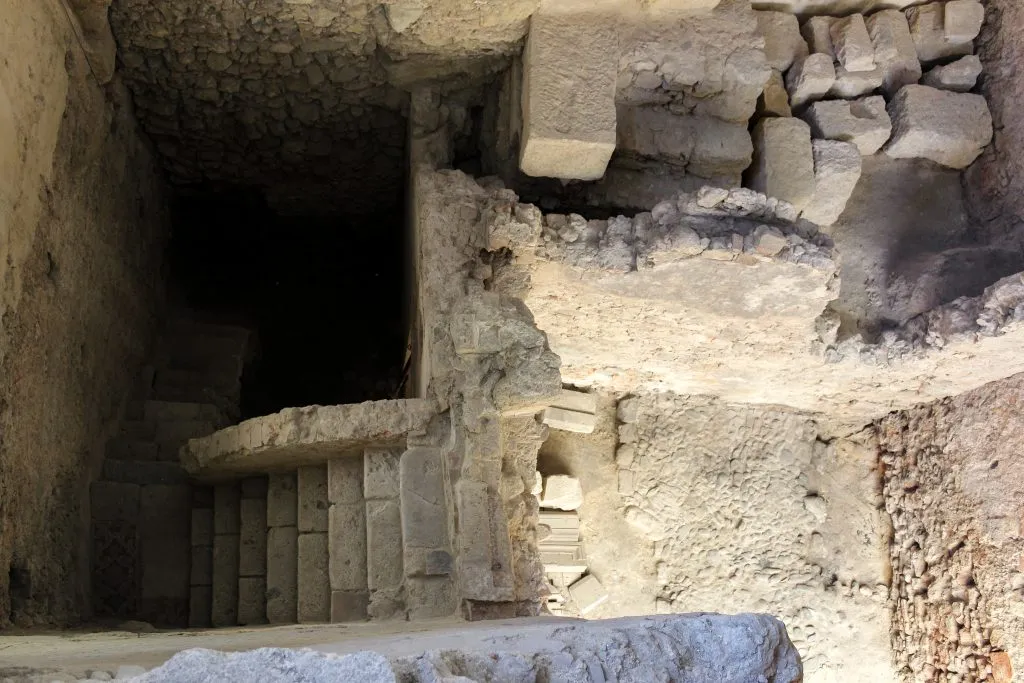
Olaias Metro Stop
For a truly off the beaten path Lisbon attraction, head out to the Olaias metro stop on Lisbon’s red line!
Metro stops aren’t necessarily known for their art installations–but there are exceptions, and the Olaias metro stop is one of them.
Designed by Portuguese architect Tomás Taveira, Olaias has been ranked among the most beautiful metro stations in the world.
Fair warning, it is quite out of the way from most of the best things to do in Lisbon!
… But that being said, if you’re a fan of modern art, metro systems, or beautiful lighting, Olaias is an interesting place to visit.
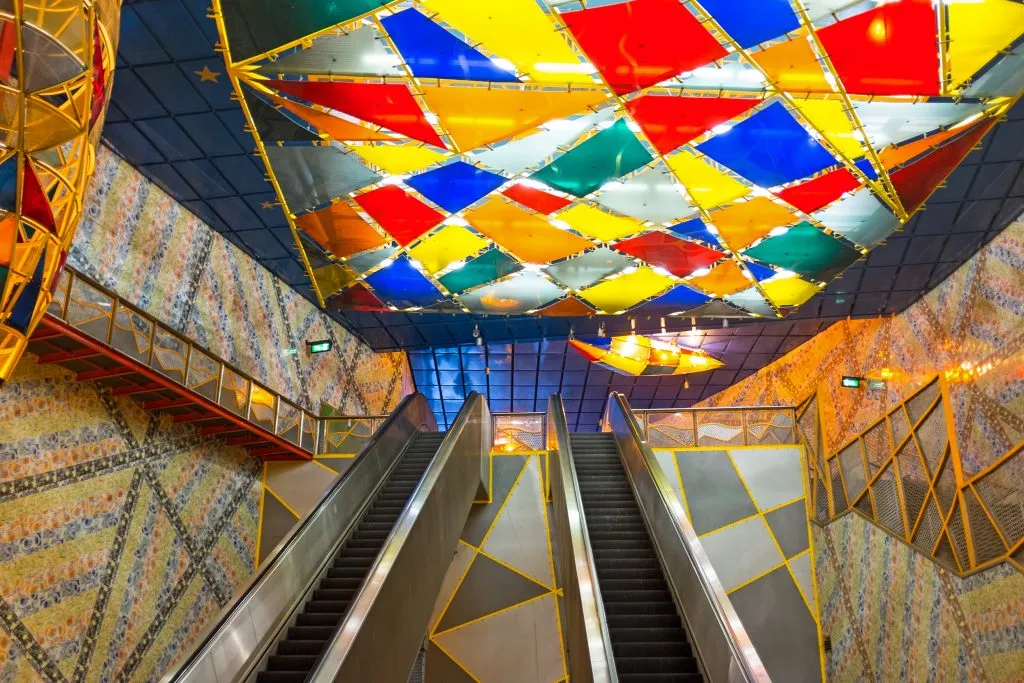
National Coach Museum
Lisbon’s National Coach Museum is one of those wonderful museums that takes a topic many of us have very little knowledge about and makes it fascinating.
Home to one of the world’s best collections of horse-drawn carriages, the National Coach Museum is a delight to explore.
The carriages date between the 17th and 19th centuries, and include everything from jaw-dropping, opulent carriages used by royalty for ceremonial purposes to a 19th-century mail coach and even a jail coach!
The carriages are arranged more or less by time period, and as you travel through the museum, you’ll find that the coaches get sleeker, simpler, and more and more familiar as the timeline inches toward the revolution of “horseless carriages”.
I love this museum and highly recommend it, but it isn’t the cheapest museum in Lisbon with tickets starting at 8 Euro.
If you plan to visit, you may want to price out whether a Lisbon Card (as of the time of writing, the National Coach Museum is an included attraction) is right for your trip.

The Guard Dog of Castello
This is more of a quirky point of interest than anything else, but it brings me too much joy not to mention!
Stroll along Rua de Santa Cruz do Castelo, past the entrance to Castelo de São Jorge on your left, and you’ll soon come to this stuffed “guard” dog on display at one of the homes.
We’ve walked by this dog at least a dozen times, and he’s never failed to put a smile on my face!
On a more traditional tourism note, if you continue slightly further, you’ll reach the lovely Church of St. George’s Castle on the Largo de Santa Cruz do Castelo, which is worth a peek inside.
You can even climb to the top if the views from the castle itself aren’t enough for you!
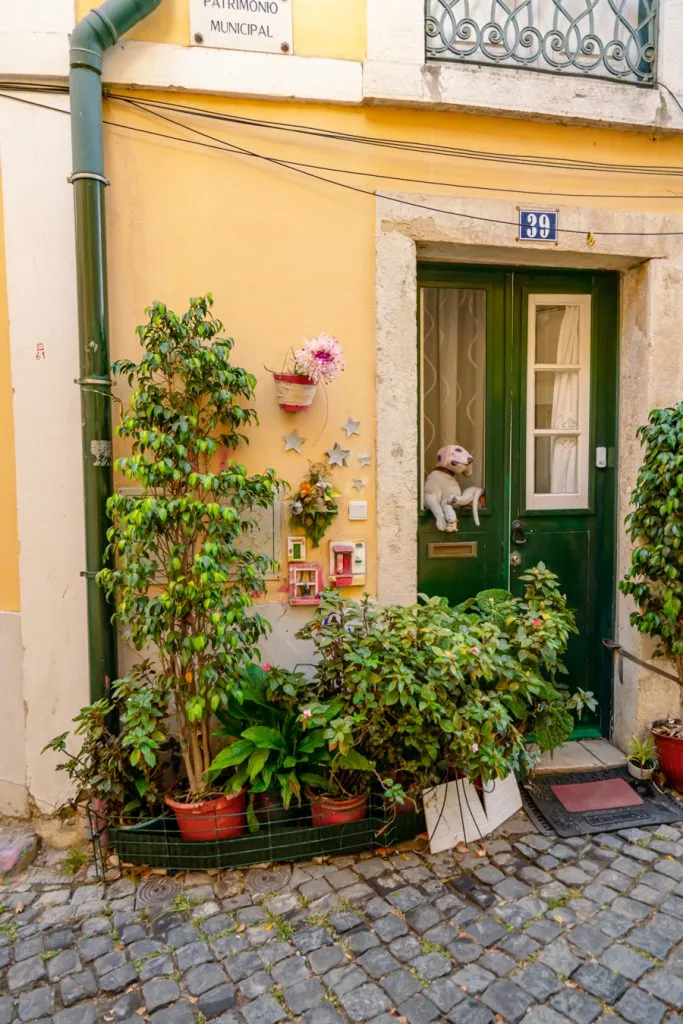
Fronteira Palace
Lisbon’s gorgeous Fronteira Palace (Palace of the Marquesses of Fronteira) is one of the best places to visit in Lisbon off the beaten path.
Dating to 1640 and home to one of the best collections of azulejos in the city, especially among those that you can view in their original locations, this opulent palace is a delight to visit.
The intricate gardens, with their own gorgeous azulejos, are also a large part of the appeal.
So, why is this beautiful palace so uncrowded?
To visit the interior, you’ll need to plan ahead and sign up for a guided tour, though you can visit the gardens independently.
And, to get there in the first place, you’ll likely need to take a taxi from a more central location in Lisbon.
For travelers who make the effort, though, the Fronteira Palace is a memorable hidden gem that you’ll definitely walk away thinking was worth the trip.
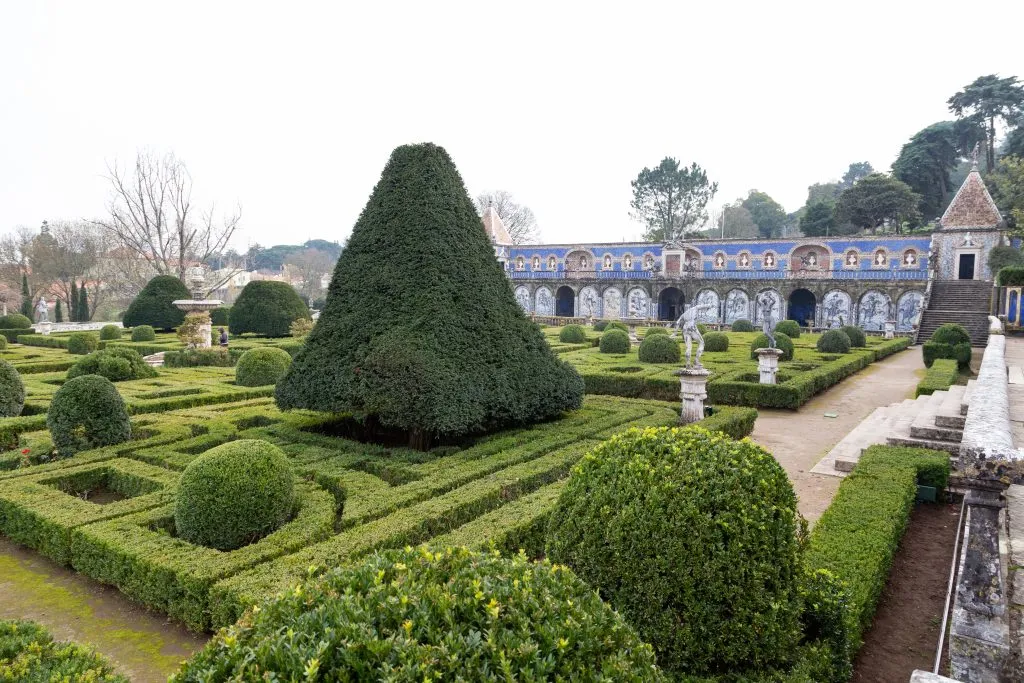
Elevador do Lavra + Jardim do Torel
Of Lisbon’s 3 funiculars, the Elevador do Lavra is both the oldest and the least visited, making it an ideal offbeat attraction to visit in Lisbon!
Typically far less crowded than the popular Glória and Bica funiculars, but lovely to visit, the Elevador do Lavra (also called the Ascensor do Lavra) opened in 1884.
If you ride to the top, you’ll find yourself very close to the Jardim do Torel, another one of the many hidden gems in Lisbon.
This peaceful garden has a beautiful view of the city–but since it is a bit out of the way and doesn’t overlook any iconic monuments, it’s a somewhat unusual place to visit in Lisbon and tends to remain uncrowded.
Map of the Best Hidden Gems in Lisbon
Take This Map With You! Click each highlight to pull up the name of the destination. To save this map to “Your Places” on Google Maps, click the star to the right of the title. You’ll then be able to find it under the Maps tab of your Google Maps account! To open the map in a new window, click the button on the top right of the map.

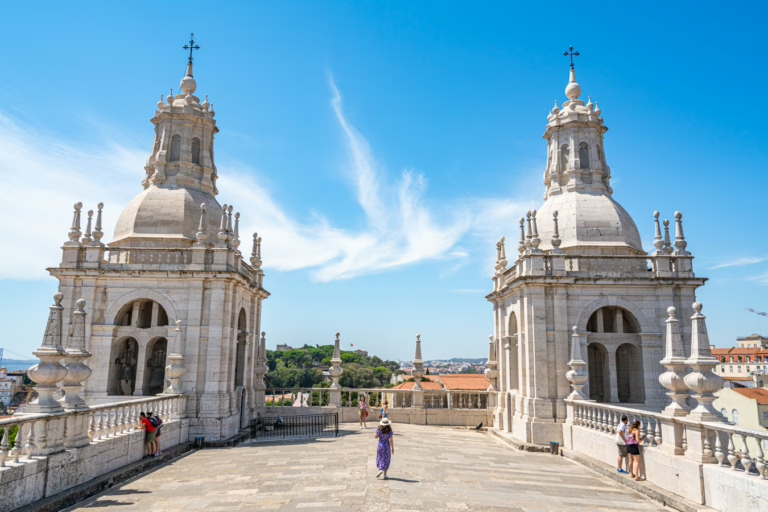
About Kate Storm